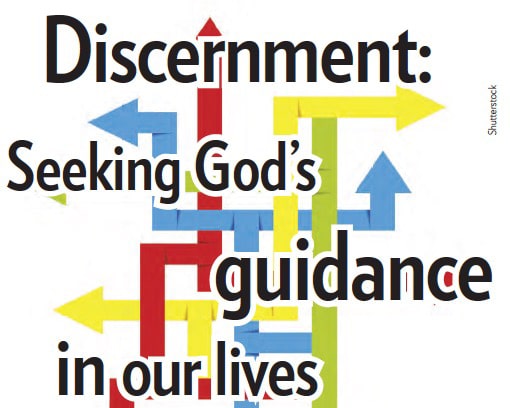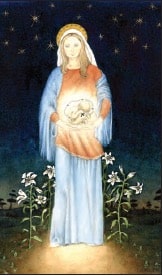This is the sixth in a series looking at the Church’s 12 most recent popes and the marks they’ve made on the Church. The series appeared monthly throughout 2018.
On Aug. 23, 1939, Nazi Germany and the Soviet Union stunned the world by announcing they had entered into a nonaggression agreement. It was not to last long, but the pact set the stage for the start of World War II.
In “Men at Arms,” the first volume of British Catholic novelist Evelyn Waugh’s masterful trilogy, Guy Crouchback, scion of an old Catholic family, muses on the gratifying implications of this agreement between the Nazi and Communist powers — each of which, up until then, had been the mortal enemy of the other (and soon would be again).
“Now, splendidly, everything had become clear,” Waugh writes. “The enemy at last was plain in view, huge and hateful, all disguise cast off. It was the Modern Age in arms.”
The Modern Age in arms — this was the crisis that, six months earlier, Pope Pius XII had been summoned to confront by the conclave of cardinals that chose him as the 259th successor of St. Peter. His years in the diplomatic service of the Holy See were superb preparation for the task. But, from another perspective, neither he nor anyone could have been truly prepared for the stupendous challenges that lay ahead. All things considered, he met them remarkably well.
Diplomatic service
Eugenio Maria Giuseppe Giovanni Pacelli was born March 2, 1876, one of four children of a family of the “Black Nobility” made up of old Roman families loyal to the papacy. His grandfather was a government official under Pius IX and a founder of the Vatican newspaper, L’Osservatore Romano; his father dean of the Roman Rota; his brother, Francesco, a legal adviser to Pius XI who helped negotiate the Lateran Treaty of 1929 that set the terms of the rapprochement between the Holy See and the Italian state after decades of estrangement.
| Pius XII at a glance |
|---|
|
– Born Eugenio Maria Giuseppe Giovanni Pacelli on March 2, 1876
– Ordained a priest in 1899, a bishop in 1917 and made a cardinal in 1929
– Pope from March 2, 1939-Oct. 9, 1958
– Navigated the Church through the trials of World War II and the Holocaust
– Infallibly defined the dogma of the Assumption of Mary in 1950
– Declared Venerable in 2009
|
Eugenio was ordained a priest in 1899. After doing pastoral work, he joined the staff of the Vatican Secretariat of State and worked with Cardinal Pietro Gasparri on the preparation of the first-ever Code of Canon Law, which went into effect in 1918. During these years, he represented the Holy See at numerous international events, including the coronation of Britain’s King George V in 1911.
In 1914, Pope Benedict XV chose Cardinal Gasparri as his secretary of state. He in turn chose Father Pacelli to head the secretariat’s section on “extraordinary ecclesiastical affairs” — Vaticanese for the foreign office. During World War I, the priest directed programs for locating and assisting prisoners of war and distributing humanitarian aid. In 1917, Pope Benedict XV appointed him nuncio to Bavaria and named him an archbishop. With the formation of a short-lived Bavarian Soviet Republic, he several times faced armed Marxist revolutionaries in Munich. The pope named him nuncio to Germany in 1920, and in 1925 he moved to Berlin.
Pacelli conducted secret talks with representatives of the Soviet Union in hopes of finding a modus vivendi for the Church in that now officially atheist country, but in the absence of progress Pius XI ordered the talks to end in 1927. Shortly after the onset of the global financial crisis in 1929, the pope recalled the nuncio to Rome, named him a cardinal, and, when Cardinal Gasparri retired, appointed him secretary of state.
In that capacity, Cardinal Pacelli traveled widely. In 1936, he went to the U.S. on a trip organized by Auxiliary Bishop Francis Spellman of Boston (later, archbishop of New York and a cardinal), an old friend from their days together in the Secretariat of State.
Among the stops in 1936, Cardinal Pacelli met with President Franklin D. Roosevelt at the Roosevelt family home in Hyde Park, New York. Thereafter, Roosevelt referred to him as “my old friend,” and in 1939, the president named former U.S. Steel executive Myron Taylor his personal representative to the Holy See. The White House and the Vatican communicated often during the war years.
As secretary of state, Cardinal Pacelli negotiated concordats with a number of countries, including Germany. Adolph Hitler, having come to power in 1933, saw political advantage in reaching an early accord with the Church. Cardinal Pacelli had no illusions about the Nazis but hoped to obtain for the Church the protection of a formal agreement. Nazi violations of the concordat began almost at once.
Between 1933 and 1939, Pope Pius XI made 55 formal protests to the German government. Together with Cardinal Michael von Faulhaber of Munich, Cardinal Pacelli had a major role in writing Mit Brennender Sorge, Pius XI’s 1937 encyclical condemning Nazism’s pagan ideology. This first official condemnation of Nazism by any major group drew a vengeful response from the party.
The pope and the Nazis
After Pius XI’s death in February 1939, Cardinal Pacelli’s experience in foreign affairs made him the logical successor. Elected on March 2, he chose as his motto Opus Justitiae Pax — Peace the Work of Justice. True to that, he called for an international conference to head off war. His first encyclical, Summi Pontificatus, published in October after the outbreak of war, condemned the German and Soviet invasions of Poland, anti-Semitism and totalitarianism.
During World War II, Pope Pius XII maintained the Vatican’s traditional policy of neutrality. But in 1940, he served as a channel between German military leaders contemplating a coup to overthrow Hitler and the British government. He also passed on to the Allies information indicating that a German attack on the Low Countries was imminent.
Humanitarian efforts, including aid to prisoners of war, were also a major part of the Vatican’s response to the conflict. Pius XII gave asylum in the Vatican and Castel Gandolfo to many refugees, including many Jews. On several occasions he denounced Nazi racist ideology and Jewish persecution. He also pleaded to have Rome treated as an “open city” and spared Allied bombing. And when bombs did fall — including on Rome’s largest cemetery, demolishing the tombs of the Pacelli family — he rushed to the scene to comfort the injured and bless the dead and dying.
Pope Pius XII despised Nazism and considered Hitler an evil man, but he regarded Soviet Communism as an even greater menace. With good reason. Following the war, Communism spread through Eastern Europe with the backing of the Red Army. These were the years of the Church of Silence, of the imprisonment of Church leaders like Cardinal Wyszyński (Poland), Cardinal Stepinac (Yugoslavia) and Cardinal Mindszenty (Hungary), of continuing efforts to control and harass believers.
In 1948 and again in 1950, Pius XII took steps to block a potentially disastrous setback — for the Church and for Western democracy — of a Communist victory in Italian elections. He called on Catholics to turn out and vote and threatened Communists and those who supported them with excommunication. The Communists lost.
Life of the Church
Though best remembered now for his role in the world crises of his day, Pope Pius XII also made notable contributions to Catholic doctrine and liturgy. These included the encyclicals Mystici Corporis Christi (1943) on the Church as Mystical Body of Christ, Divino Afflante Spiritu (1943) on Scripture study, and Mediator Dei (1947) on divine worship and the liturgy. He reformed the Holy Week rites and shortened the Eucharistic fast. In such ways, he laid the groundwork for the Second Vatican Council that was to take place two decades later. Very different, however, was the encyclical Humani Generis (1950), a document reminiscent of Pope St. Pius X’s warnings against modernism in its criticisms of some philosophical and theological trends of the day.
In 1950, Pope Pius infallibly defined the dogma of the Virgin Mary’s bodily assumption into heaven. In talks to numerous groups, he applied Catholic moral principles to contemporary issues and developments ranging from movies to biomedical ethics.
Beginning with a long illness in 1954, Pope Pius’s health declined, and he died Oct. 9, 1958. Pope Benedict XVI declared him “Venerable” in 2009.
Pius XII has been criticized for supposedly not speaking out against the Nazi persecution of Jews. Much of this can be traced to “The Deputy,” a 1963 play by a left-wing German writer named Rolf Hochhuth, which depicted him as a greedy hypocrite. But Pius XII has many defenders. British historian Michael Burleigh calls him a target of “Communist-inspired denigration.”
There are legitimate questions here. Did Pius XII say enough about the agony of the Jews? But what would “enough” have been in the circumstances of those times? He spoke often against anti-Semitism — as much as he thought prudent without provoking even worse reprisals by the Nazis — and certainly saved many Jewish lives. This argument no doubt will continue, but it is worth recalling that after the war Jewish leaders praised and thanked him, and the chief rabbi of Rome took the name Eugenio when he converted to Catholicism.
Russell Shaw is an Our Sunday Visitor contributing editor.







